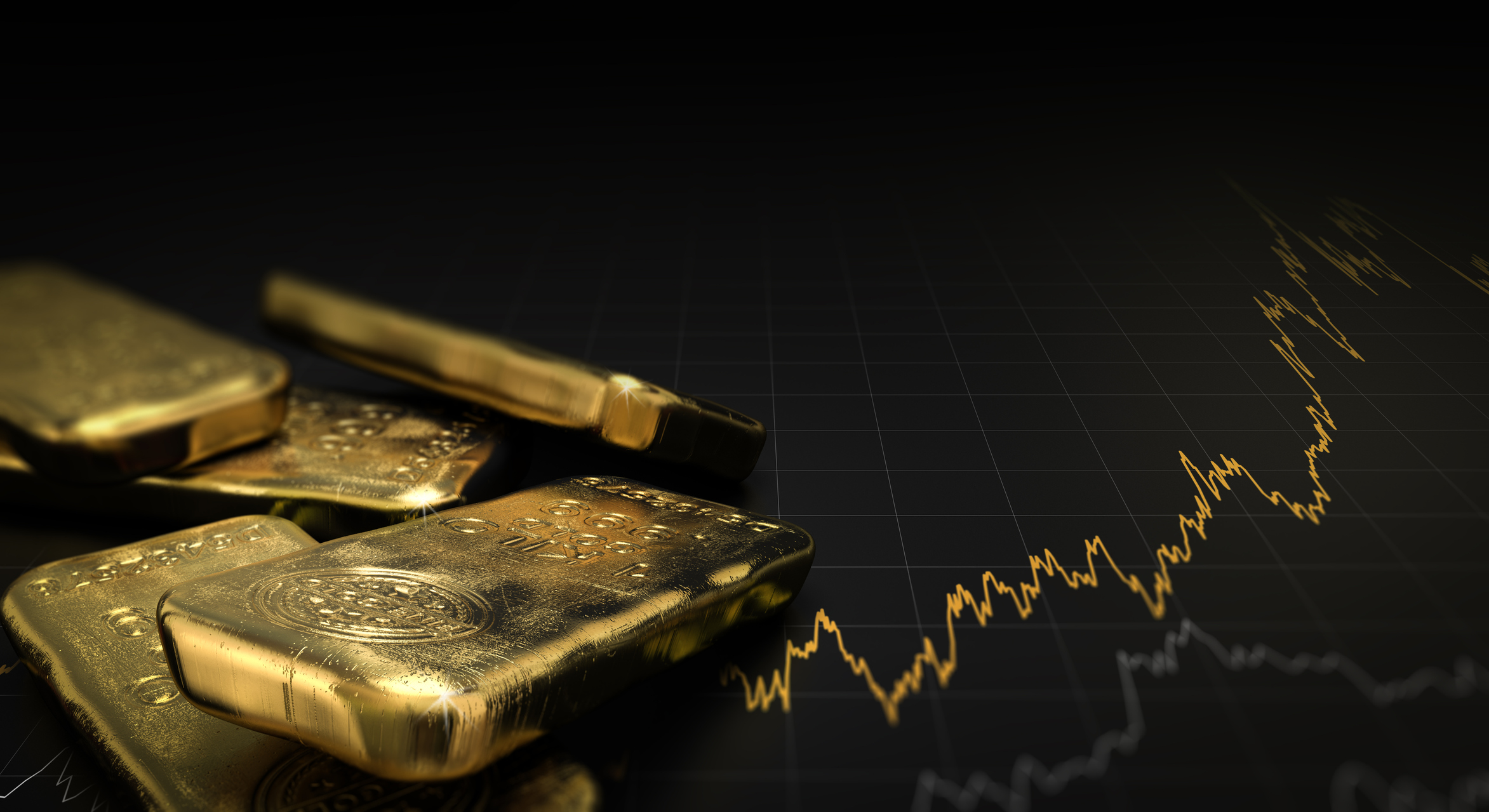Could the gold price hit $5,000?
The gold rally appears to have paused, but many of its fundamental drivers are still in place. Could gold reach $5,000 next year?


The price of gold went on a tear through 2024 and 2025, breaking through the $4,000/oz threshold in the process. Analysts at one of the world’s leading investment banks are now forecasting that the gold price could approach $5,000 before the end of next year.
Investing in gold has been all the rage in 2025, the yellow metal shining as one of the best-performing asset classes so far this year. The exceptional rally saw gold prices rise 67% between the start of the year and 20 October, when gold hit an all-time high of $4,381.60.
The yellow metal then endured a steep selloff that saw the price of gold tumble 9.8% over the next nine days, falling below the $4,000 threshold in the process.
MoneyWeek
Subscribe to MoneyWeek today and get your first six magazine issues absolutely FREE

Sign up to Money Morning
Don't miss the latest investment and personal finances news, market analysis, plus money-saving tips with our free twice-daily newsletter
Don't miss the latest investment and personal finances news, market analysis, plus money-saving tips with our free twice-daily newsletter
That seemed to have marked the end of the gold rally, but prices have made a steady recovery since, rising back up to $4,164.59 as of close on 26 November.
Michael Hsueh, research analyst at Deutsche Bank, now thinks gold prices could approach $5,000 during 2026.
Hsueh anticipates gold prices to end next year around $4,450, but that the price range through the year will be between $3,950-$4,950, suggesting gold could come close to breaking through the $5,000 threshold at some point during the year.
Stabilising short-term flows, supportive supply-demand dynamics and a continuation of other positive drivers from earlier in the year were highlighted by Hsueh as supportive of gold price rises.
“Altogether these suggest an upgrade to our 2026 forecast to USD 4,450/oz from USD 4,000/oz previously,” said Hsueh.
Deutsche Bank analysts have set a 2027 gold price forecast of $5,150.
The outlook for gold prices
Gold is expected to continue to benefit from several tailwinds in the near future, including continued demand from central banks and exchange-traded funds (ETFs), as well as the further erosion of the purchasing power of the dollar.
“The implied risks to the value of fiat currency remain embedded in the financial model via US government debt growth and the US dollar,” said Hsueh.
Historically, hedging against inflation was the primary investment case for gold. But Arnab Das, global macro strategist at Invesco, observes that this has changed in the post-Covid era, as gold prices have risen even as inflation has come down from its highs in 2022.
“Gold has gone from [an] inflation hedge to a general uncertainty hedge,” says Das. ”Gold should continue to be overweighted in portfolios given geopolitical uncertainty and the risk of high supply-side inflation with the push to rearm and reindustrialize”.
Joseph Cavatoni, senior market strategist at World Gold Council, added that there is potentially more uncertainty to consider, such as the legal challenge in the US against Trump’s tariffs.
How to gain exposure to gold prices
There are three main ways to invest in gold. The first one is investing in the metal itself through a financial contract, such as an exchange-traded fund (ETF) or exchange-traded commodity (ETC).
Investments into these kinds of products are another factor helping to support gold prices this year.
“European investors are getting involved, having added over $6.5 billion to gold ETCs this year alone, reversing the outflows of 2024,” says Tom Bailey, head of research at HANetf.
See our article on the best gold ETFs for more information.
You can also get indirect exposure by investing in the miners that dig gold out of the ground. This can be done by investing directly in their shares, or by buying a gold fund or investment trust.
While gold miners don’t always rise with the gold price, as other company-specific factors are at play, they have “stolen the show so far” this year, says Bailey.
“Whereas physical gold outperformed miners by a wide margin in 2024, this year gold miners have produced a return almost three times higher,” Bailey adds.
Lastly, you can buy physical gold bars or gold coins.
In terms of how much gold to hold in a portfolio, Tom Stevenson, investment director at Fidelity International, suggests around 5-10% is a good amount – which is about the same as you might hold in cash.
“The two offer insurance and dry powder to complement the growth and stability of the shares and bonds that make up the bulk of a balanced portfolio,” he comments.
Get the latest financial news, insights and expert analysis from our award-winning MoneyWeek team, to help you understand what really matters when it comes to your finances.

Dan is a financial journalist who, prior to joining MoneyWeek, spent five years writing for OPTO, an investment magazine focused on growth and technology stocks, ETFs and thematic investing.
Before becoming a writer, Dan spent six years working in talent acquisition in the tech sector, including for credit scoring start-up ClearScore where he first developed an interest in personal finance.
Dan studied Social Anthropology and Management at Sidney Sussex College and the Judge Business School, Cambridge University. Outside finance, he also enjoys travel writing, and has edited two published travel books.
-
 Top 10 locations for buyers and renters revealed
Top 10 locations for buyers and renters revealedLondon is crowned as the most popular location for renters and buyers, despite rising costs. But where else are house hunters heading to?
-
 Making financial gifts to loved ones? Write it down or risk giving an IHT bill too
Making financial gifts to loved ones? Write it down or risk giving an IHT bill tooGiving gifts can be a way to pass on wealth and reduce the inheritance tax bill on your estate but do it wrong and you could leave family and friends more than they bargained for.